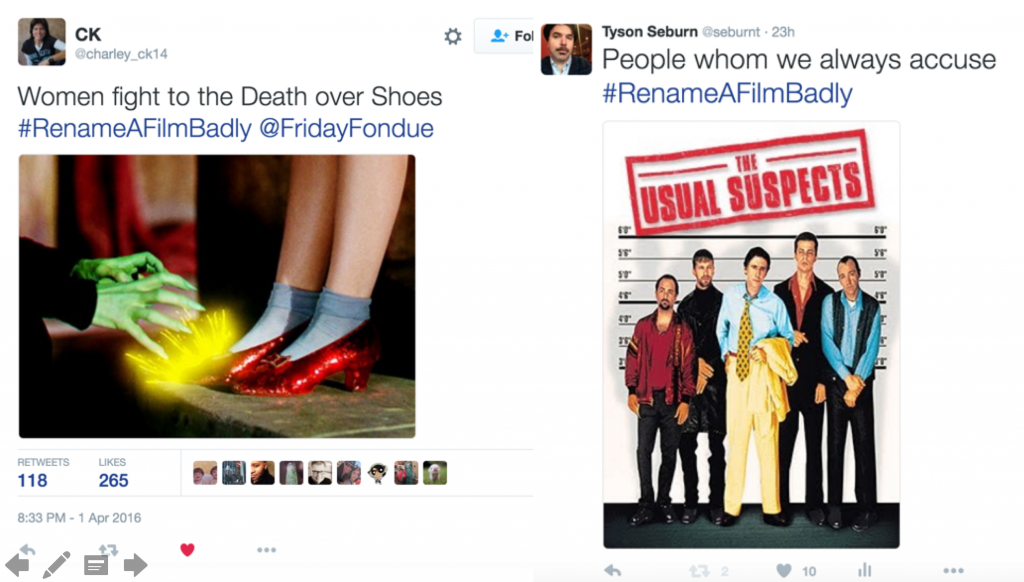On the Friday evening of IATEFL not long ago, I led a Pecha Kucha session on this stage with the enormous screen. Initially when the crowd was arriving, it was nerve-wracking, but once I got on stage, it was pretty invigorating, I must admit.
https://youtu.be/Qfmyqka0R6o
After all the media attention and fan letters died down, a thought occurred to me: these type of hashtags could be pretty useful (even fun?) with a little thought. I’d argue that it might be more inspiration than practical to actually use Twitter; perhaps pen/paper tweets or perhaps Google Docs might work more flexibly during class. Still, the nature of tweets being short is still key.
Take #RenameaFilmBadly for example. The example tweets actually summarise a key film point or paraphrase the title–both valuable skills for EAP students.

A couple ways this can be manipulated after either summarised plot point/paraphrases have been made:
- Redistribute them to other groups to decipher which film it represents.
- Put groups together to critique the quality of the paraphrased title.
- Put groups together to critique how representative the summarised plot point is to the overall film.
Take #awkIATEFLtimes for more general use. Change it to #awkclasstimes. Perhaps it could be used in one of these ways:
- Students can write ways in which they’ve experienced awkward situations related to class situations (yours or any previous). Aim for humorous?
- Collect all, photocopy them, and distribute to groups. Students categorise them into groups of similarity e.g. level of awkwardness / cause of awkwardness (because of classmates? because of teacher? because of bodily noises?).
Try out an original hashtag for your teaching point. For example, #concisebits.
- Say you’re working on concision for writing. Pick out wordy student sentences from their own writing.
- Distribute them to different students. Ask them to rewrite them into a tweet.
- As an extension, redistribute #concisebits tweets. Students aim to match up tweet with original wordy sentence. Then rewrite new #concisebits tweet differently.
Take the idea of hashtags themselves.
- Give students a list of fun hashtags a la Jimmy Fallon (or maybe something suiting the atmosphere and context of your class).
- Students write a paper tweet suitable for that hashtag, but don’t include the actual hashtag on it.
- Collect all and redistribute to pairs.
- Pairs read, discuss meaning, and add the appropriate hashtag to the tweet.
 I’m sure there are many other useful hashtag-inspired activities that we could come up with. It’s worth taking a look at what’s trending on Twitter for inspiration. There are often some interesting game-like tweets happening. This one’s trending for Canada as I type this.
I’m sure there are many other useful hashtag-inspired activities that we could come up with. It’s worth taking a look at what’s trending on Twitter for inspiration. There are often some interesting game-like tweets happening. This one’s trending for Canada as I type this.
